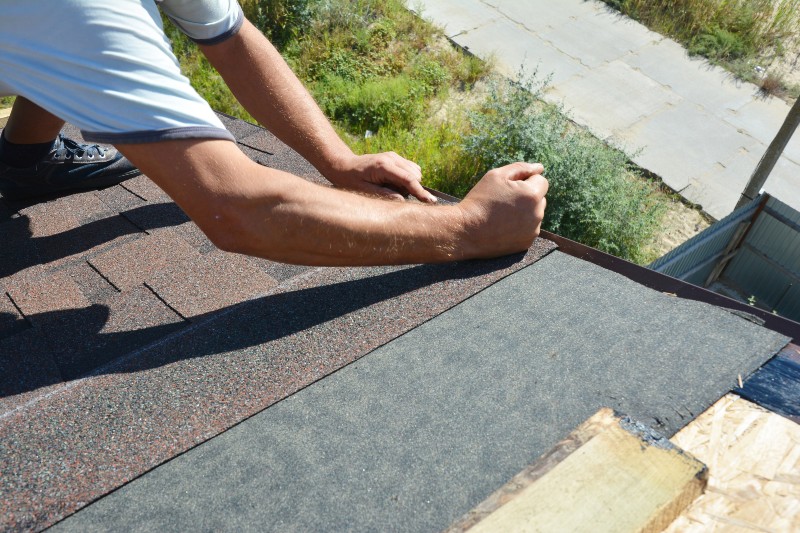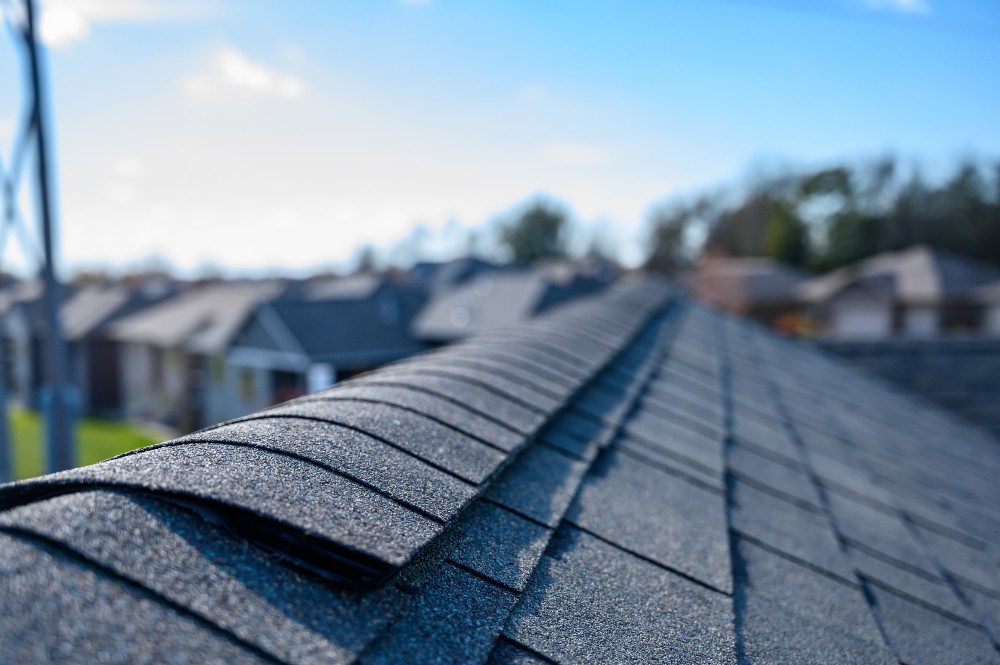Modern asphalt shingles are precision engineered building materials that are a lot more sophisticated than they may seem.
A shingle isn’t just a flimsy piece of flat tar. It’s manufactured in a very specific way so that it provides long-lasting, resilient protection for roofs. In order to get the most out of any asphalt shingle, it needs to be installed correctly. And, most modern asphalt shingles require heat sealing as a necessary step in the overall installation process.
Generally speaking, there are two main methods used to affix asphalt shingles to a roof. One is by way of nailing or stapling, and the other is by way of heat sealing. For optimal outcomes, it’s best for both methods to be done correctly at the time of installation.
[Note: Even if an asphalt shingle roof is installed in freezing temperatures, it’s not guaranteed that heat sealing will not take place. This is a common misconception. Here in Colorado, solar radiation is often enough to warm the shingles to the required sealing threshold (70 degrees, minimum) even when ambient temperatures are well below this threshold.]
Activation of Tab Shingle Tar Strips
To better understand how shingles bond to one another in order to create an impermeable membrane on a roof, it helps to understand how a typical tab shingle is constructed.
There are three main categories of tab shingles built for use on residential or conventional-sloped roofs (4/12 pitch or greater):
- Three-tab shingles. Three-tab shingles represent the most economical option for most roofs. Not only are they affordable, but they last a long time (20 years or more in most cases). However, they do limit the aesthetic options for the roof, and they can be more prone to blowing off compared to other shingle styles.
- Dimensional shingles. Dimensional shingles are much more durable than three-tab shingles, and they provide an element of depth that three-tab shingles just don’t have. But, they do cost more, and installing them requires some advanced roofing expertise.
- Luxury asphalt shingles. Luxury asphalt shingles are made to look more like old style cedar shake or slate roofs, both of which are exceptionally expensive by comparison. So, even though luxury asphalt shingles are more expensive than three-tab and dimensional shingles, they are still much cheaper than wood shake or slate alternatives.
Each of these shingle types has essentially the same basic material construction: fiberglass-infused asphalt with exterior granules and tar strips added for enhanced durability. This tar strip is most relevant to our question, “At what temperature do shingles seal?”, so let’s take a look at this important component of virtually all asphalt shingles in use today.
Ideal Temperatures for Tar Strip Sealing
Asphalt shingle tar strips are just what they sound like: premade strips of tar that are exposed along the lateral middle line of a shingle. It can help to think of this tar strip as a kind of ‘glue’ that adheres one shingle to the shingle above it, and so on up to the apex of the roof.
These tar strips are also self-sealing, making them great locations for nailing or stapling.

The ideal temperature for installing asphalt shingles is 45-85 degrees fahrenheit. When asphalt shingles are installed within this temperature range, the integrated tar strip on each shingle will naturally bond with the shingle surface above it, creating the waterproof seal you want.
Not only does this tar sealant help prevent water intrusion, it also helps prevent the shingle from blowing away during high wind events.
When asphalt shingles are installed in very cold temperatures (say, less than 30 degrees fahrenheit), it can take weeks or even months before the tar strips are heated sufficiently enough to bond the shingles together. For this reason, many roofing companies will not warranty roof repairs or replacements that are done when temperatures are too cold.
Most asphalt fiberglass shingle manufacturers recommend having at least two full days of 40+ degree temperatures to allow for the shingles to properly bond with each other. After this has happened, the temperatures can swing in either direction without risk of compromising the tar strip sealing bonds.
Questions about Roofing? Call the Pros!
No matter what style roof your home or business has, the professionals at A-to-Z Roofing & Exteriors have the high-quality materials and industry know-how to solve virtually any roofing problem you might have.
To learn more or to schedule a roof inspection, contact us today. We look forward to becoming your go-to roofing contractor for life!

